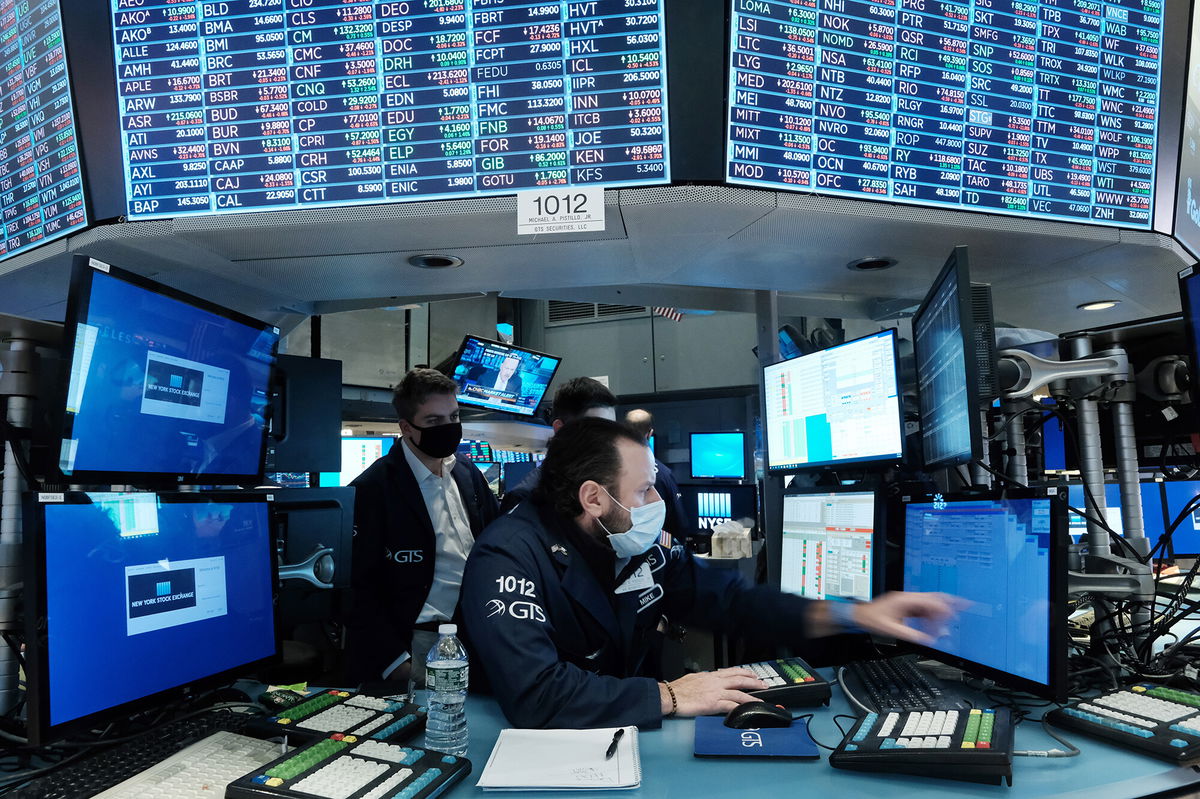Investors are feeling too giddy about the economy

December retail sales slumped as households pulled back on spending
Opinion by Mark Zandi for CNN Business Perspectives
The pandemic continues to call the shots for the economy. Each wave of the virus has done significant damage, with Omicron now hitting the economy hard. December retail sales slumped as households pulled back on spending, including travel, dining out at restaurants and attending Broadway shows. The airlines continue to struggle with flight cancellations as pilots and other personnel get sick. Unemployment insurance claims are on the rise again, as small businesses, unable to stay open, reduce staff.
At Moody’s Analytics, we have revised down our forecast for real GDP growth in the first quarter from about 5% annualized to less than 2%. And GDP could easily decline further if Omicron infections don’t subside substantially in the next few weeks.
Despite the sobering pandemic news, global investors are upbeat, even giddy. Asset prices are surging. Stock prices rose nearly 30% last year and national home values were up by almost 20%. Reflecting these price gains and the increase in household savings, the value of all assets (excluding crypto) owned by US households increased by a stunning $22 trillion in 2021. This translates into a 16.8% gain, the strongest on record and more than double the average annual increase.
To be sure, asset prices should be high given record low interest rates. Low interest rates increase the present value of future corporate profits, rents and other income.
But prices appear stretched well beyond what can be explained by low rates. According to my own estimate, the ratio of the value of assets owned by households to GDP rose to 7.5 times at the end of last year. Prior to the pandemic, this multiple was close to 6 times. Other tried-and-true measures of asset price valuations, such as stock price multiples, corporate bond credit spreads and commercial real estate capitalization rates are also well outside historical bounds.
Now markets appear to be bordering on speculative, with more investors purchasing assets with the intent of selling quickly for a profit. So-called meme stocks, SPACs and the wave of initial public offerings, particularly of high-flying technology companies, are such signs in the stock market. In the housing market, it is the recent spike in the share of home sales by investors. Investor purchases have almost doubled over the past year, and suddenly account for one-fourth of home sales. Meanwhile, sales to individual buyers are actually down a bit.
And the crypto markets appear to be almost completely dominated by speculators. They’ve been mesmerized by the exponential increase in prices and believe there will be other investors to buy their crypto at a much higher price than they paid. It’s the greater fool theory at work — prices go up because people are able to sell their crypto to a greater fool. That is, of course, until there are no greater fools left.
Asset prices are thus highly vulnerable to a selloff, and the catalyst may well be the pending shifts in monetary policy. If things hold together as anticipated, the Federal Reserve will wind down its quantitative easing by this spring and begin to lift the federal funds rate off the zero lower bound soon thereafter. Interest rates are headed higher — it is only a question of how high and how fast. It is hard to fathom how asset valuations can remain as lofty as they are, even with only a modest increase in rates.
If asset markets sold off today, the decline in prices is unlikely to be deep and persistent enough to undermine the economic recovery. The resulting negative wealth effects — the impact of changes in wealth on consumer spending — would likely be modest, since the runup of wealth during the pandemic doesn’t appear to have had much — if any — impact on household saving and spending. Rising wealth in times past has made households more confident, leading to less saving and more spending. It is difficult to disentangle things, but this has not happened during the pandemic.
Moreover, households have not overly borrowed to finance their asset purchases. While margin debt, which is used to finance stock purchases, and mortgage debt have recently begun to increase quickly, it is still premature to send off red flares.
Having said this, this sanguine perspective will not hold much longer if asset prices continue to climb, and leverage continues to build at the pace of the past year. The economy has become prone to asset bubbles. There was the dot-com stock market bubble in 2000 and the housing bubble of the mid-2000s. When these bubbles ultimately deflated, they did significant damage to the economy. It is premature to think that we are in the next asset bubble, but it is not premature to worry that one is forming.
The-CNN-Wire
™ & © 2022 Cable News Network, Inc., a WarnerMedia Company. All rights reserved.